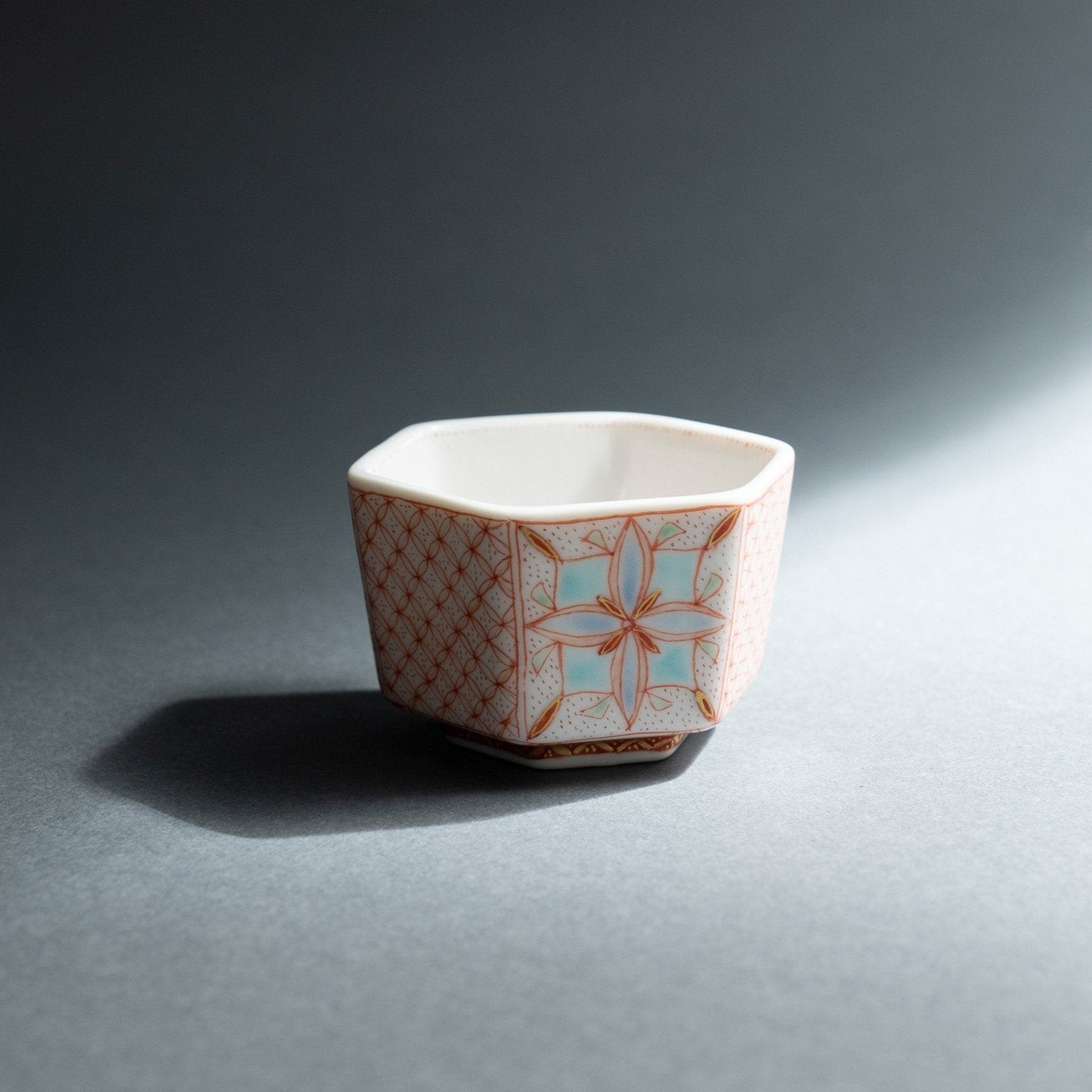
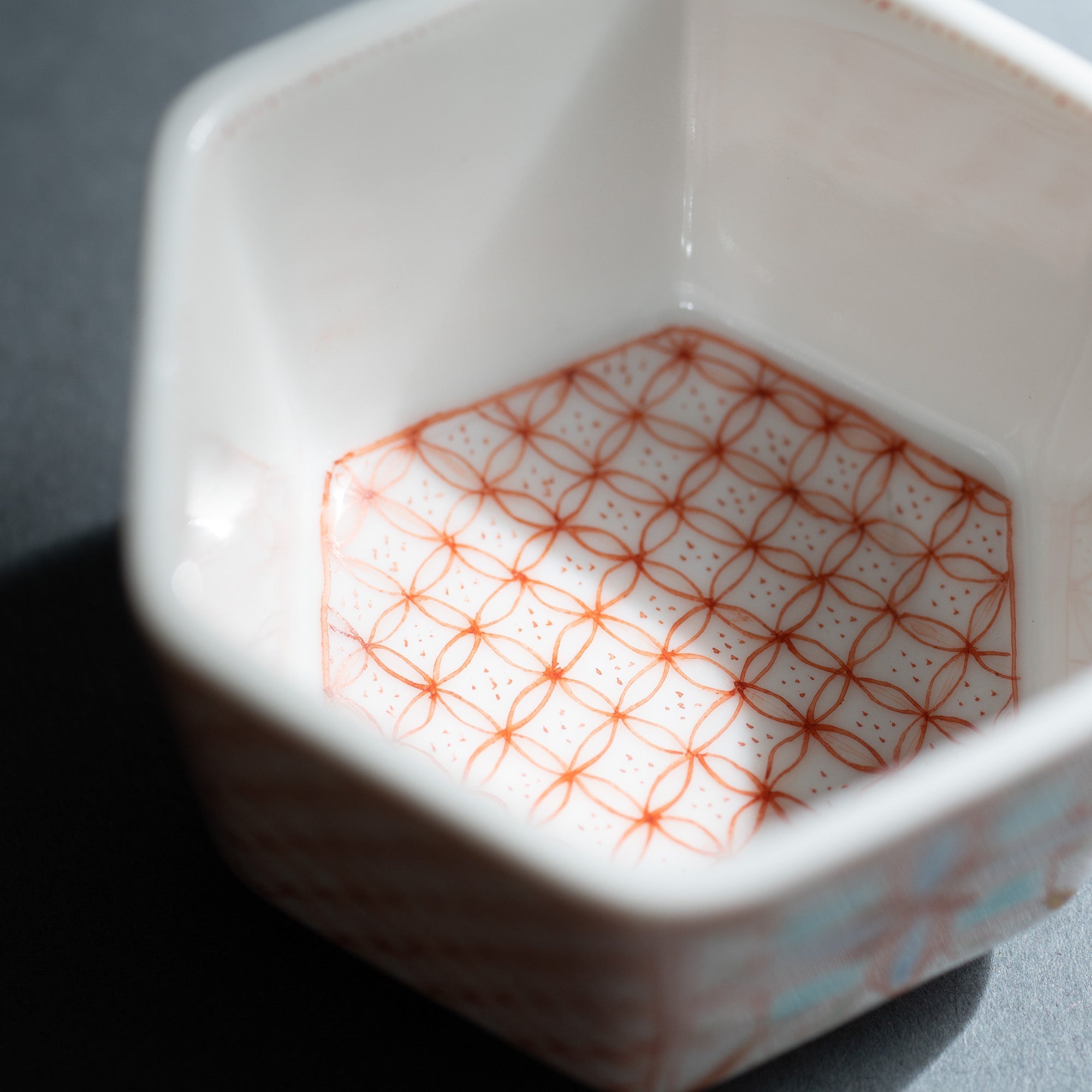
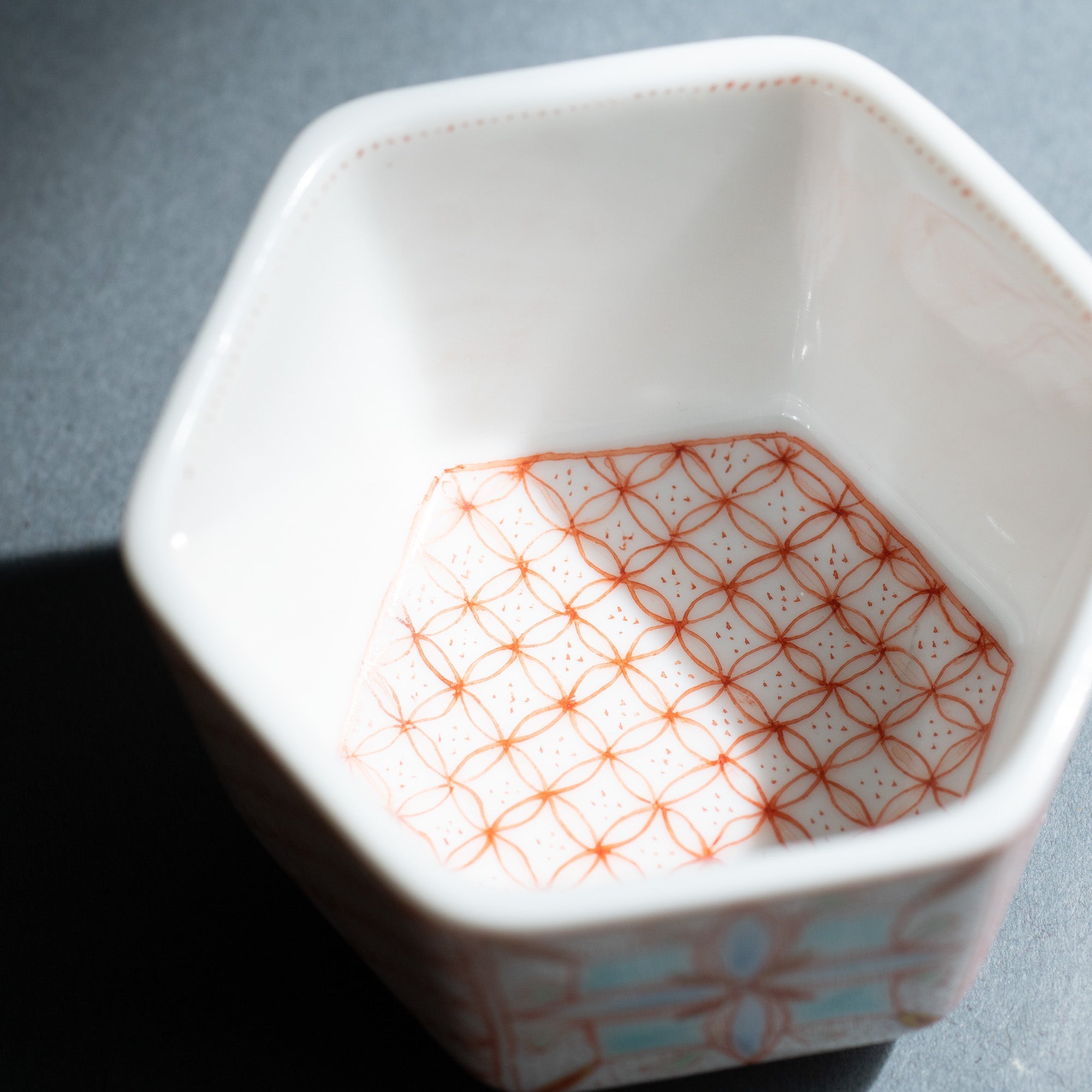
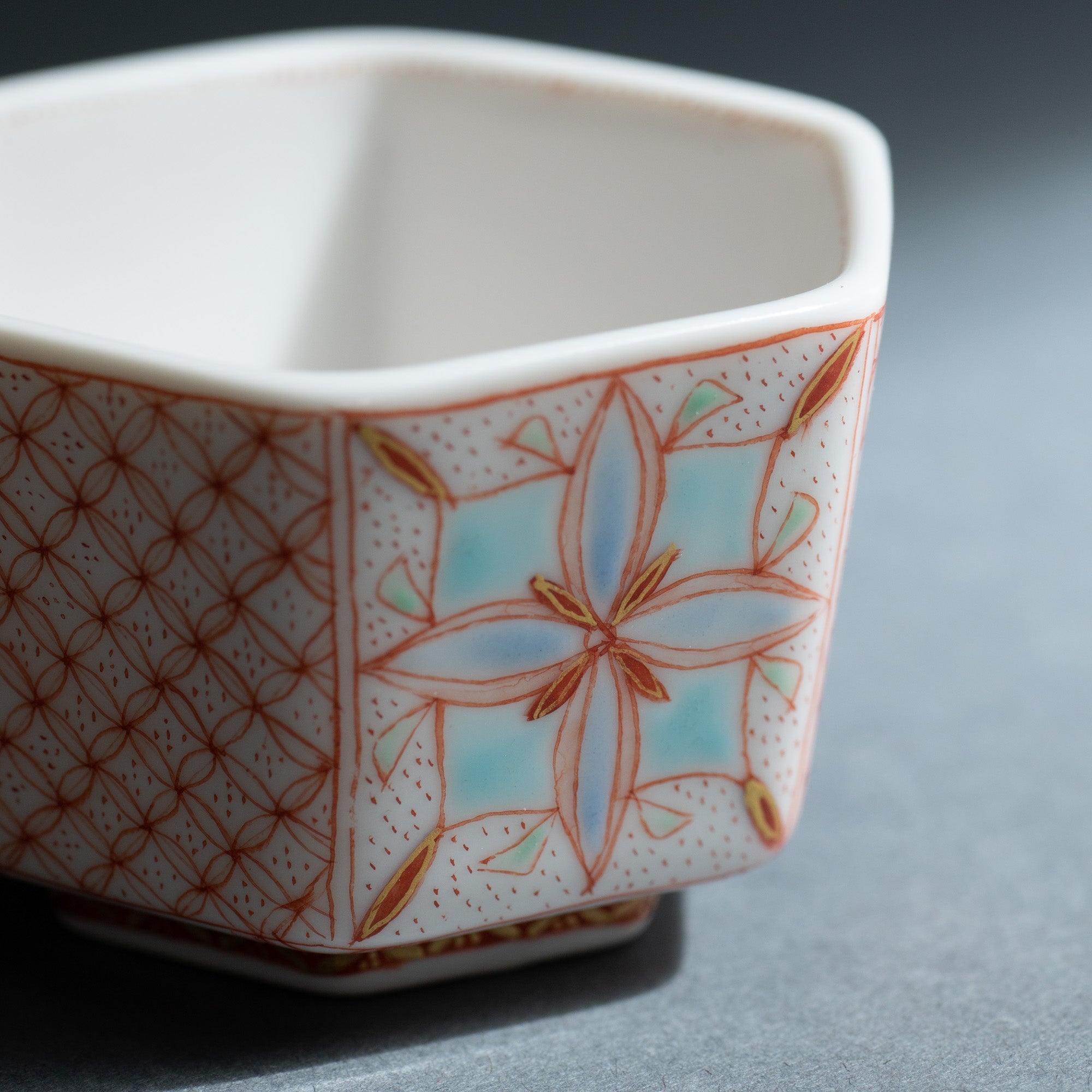
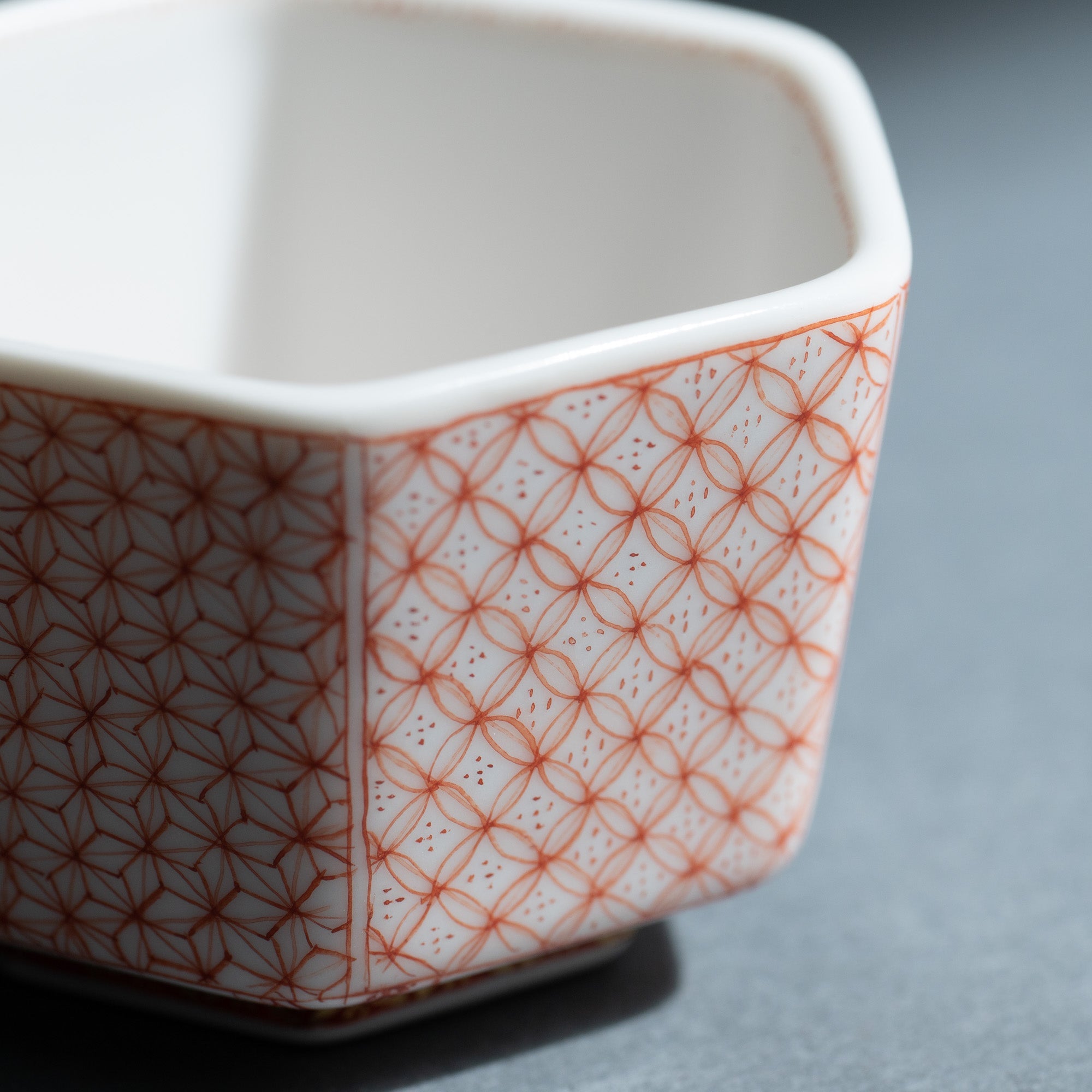
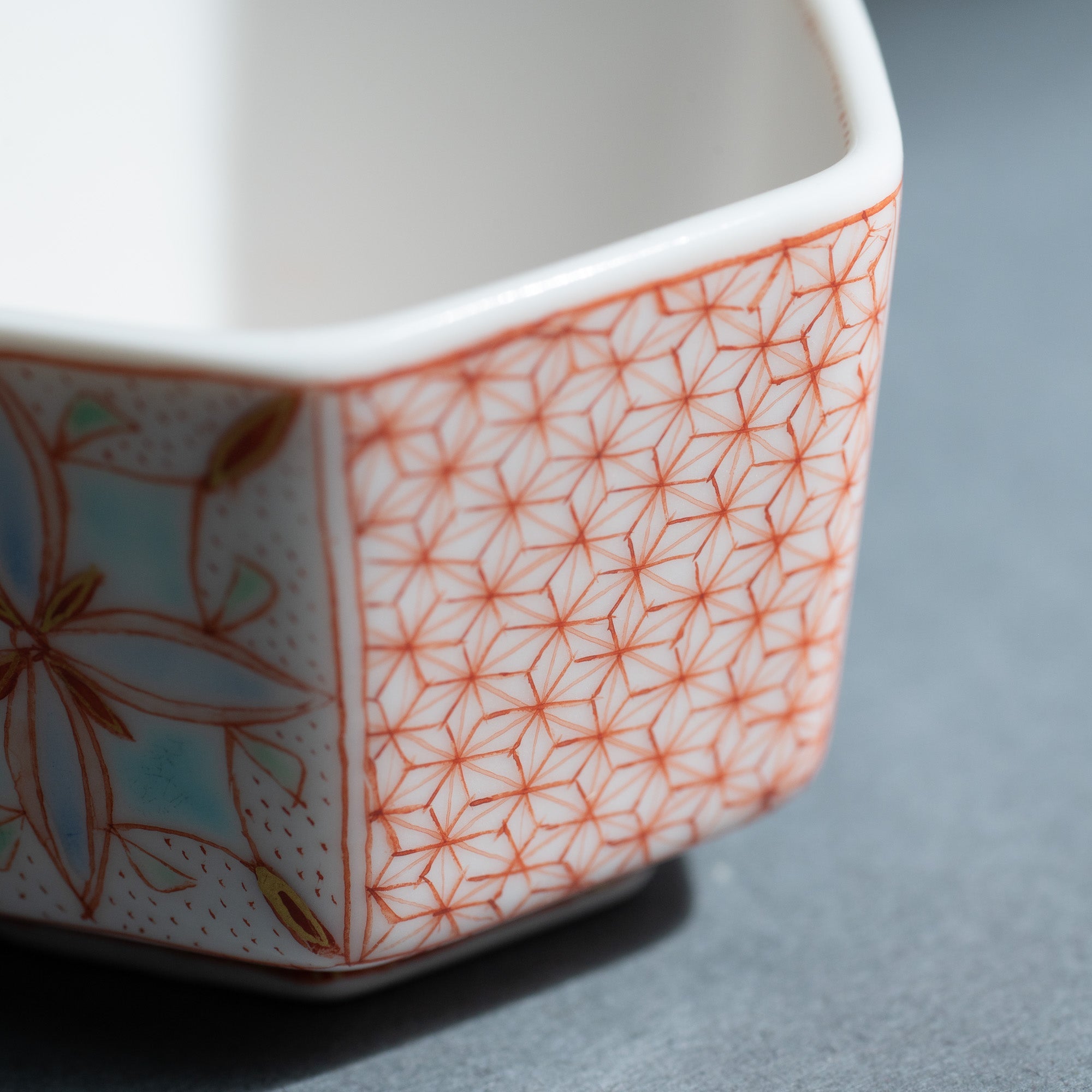
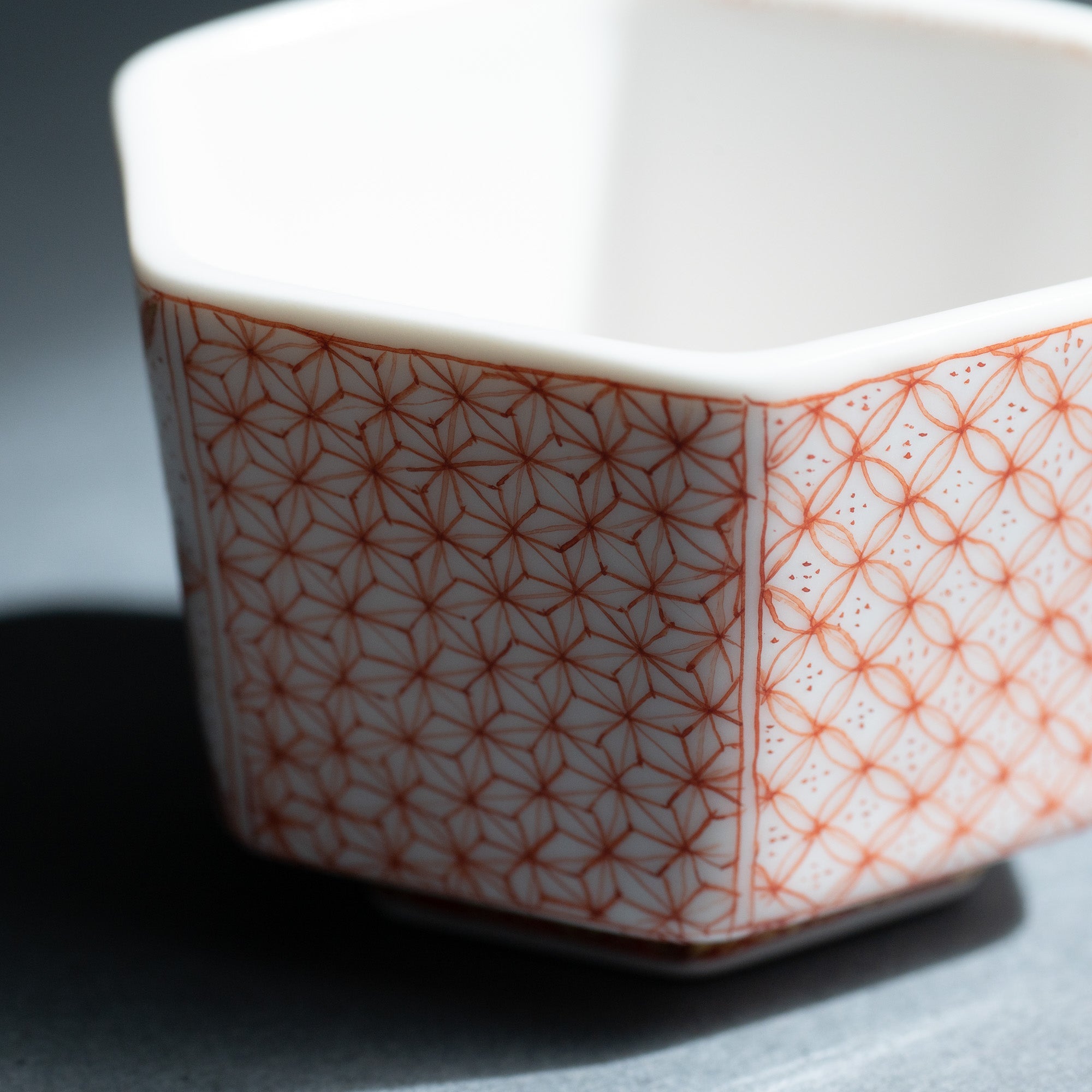
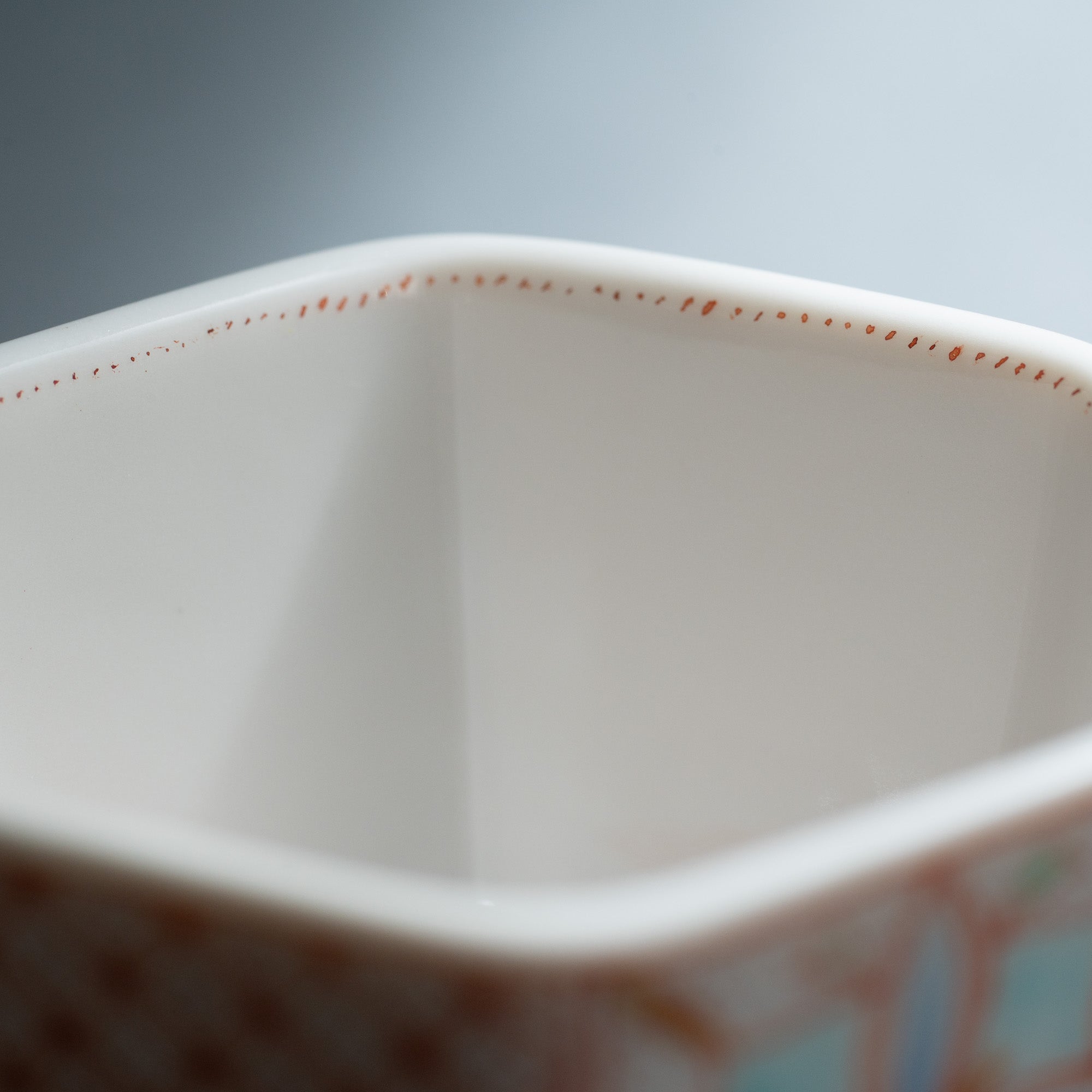
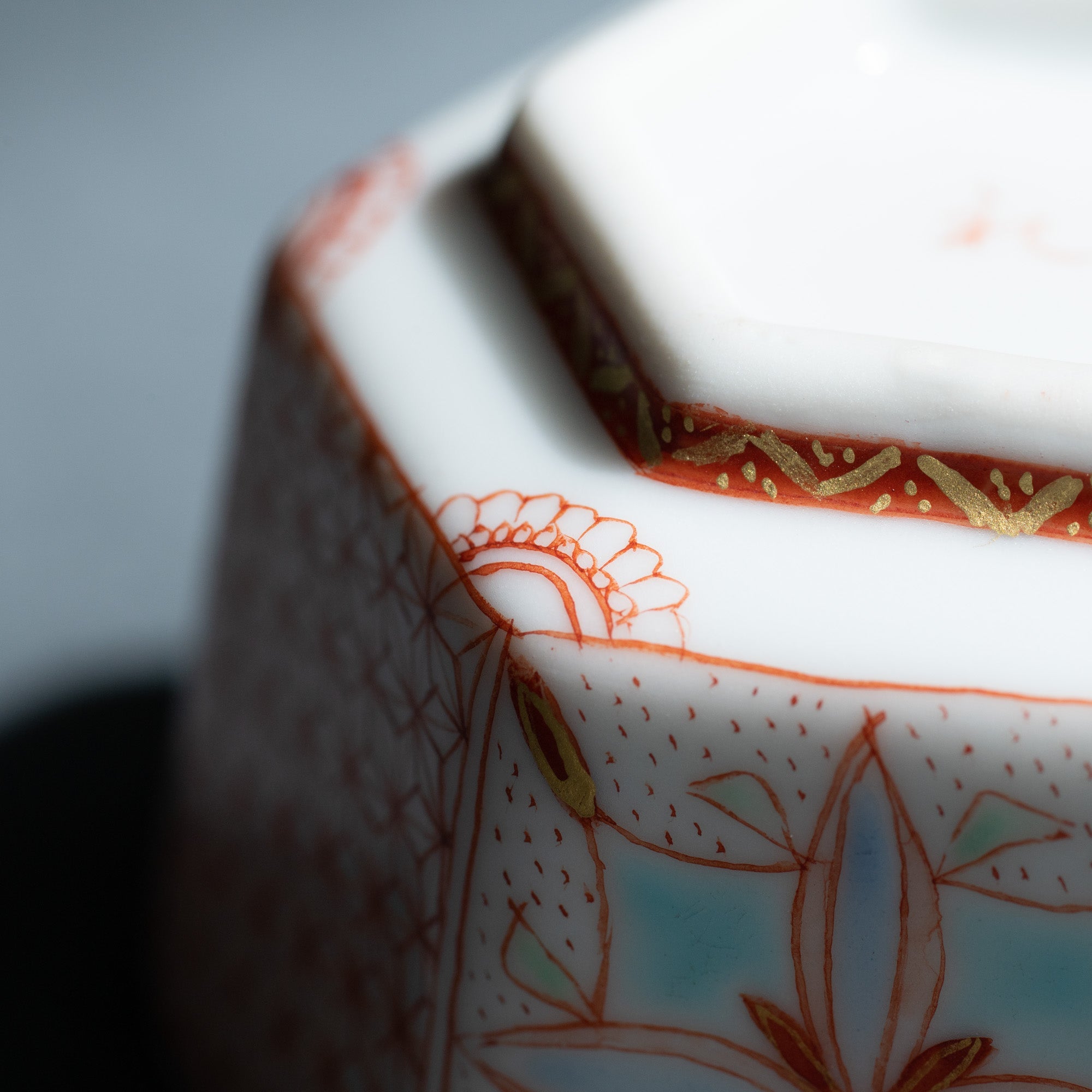
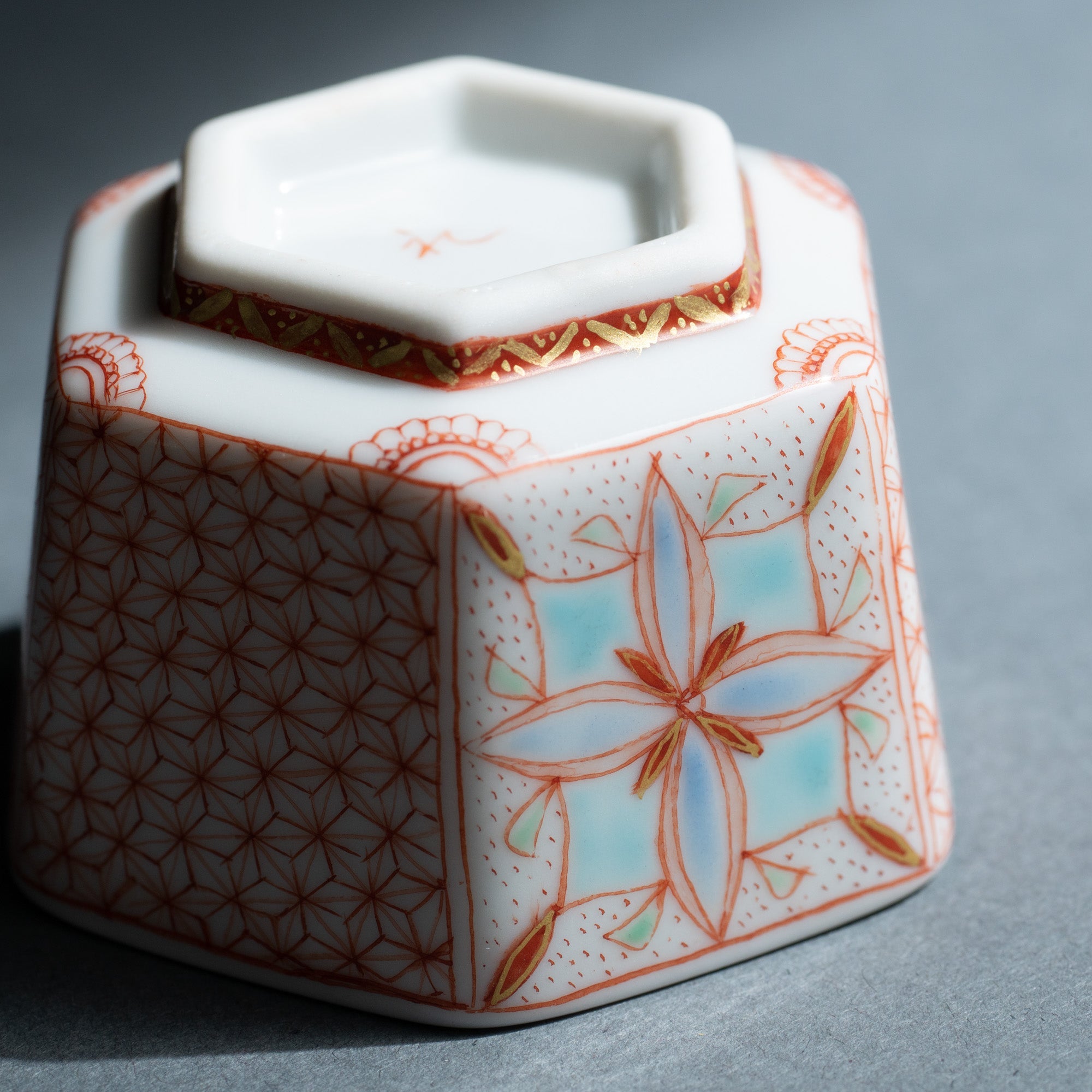
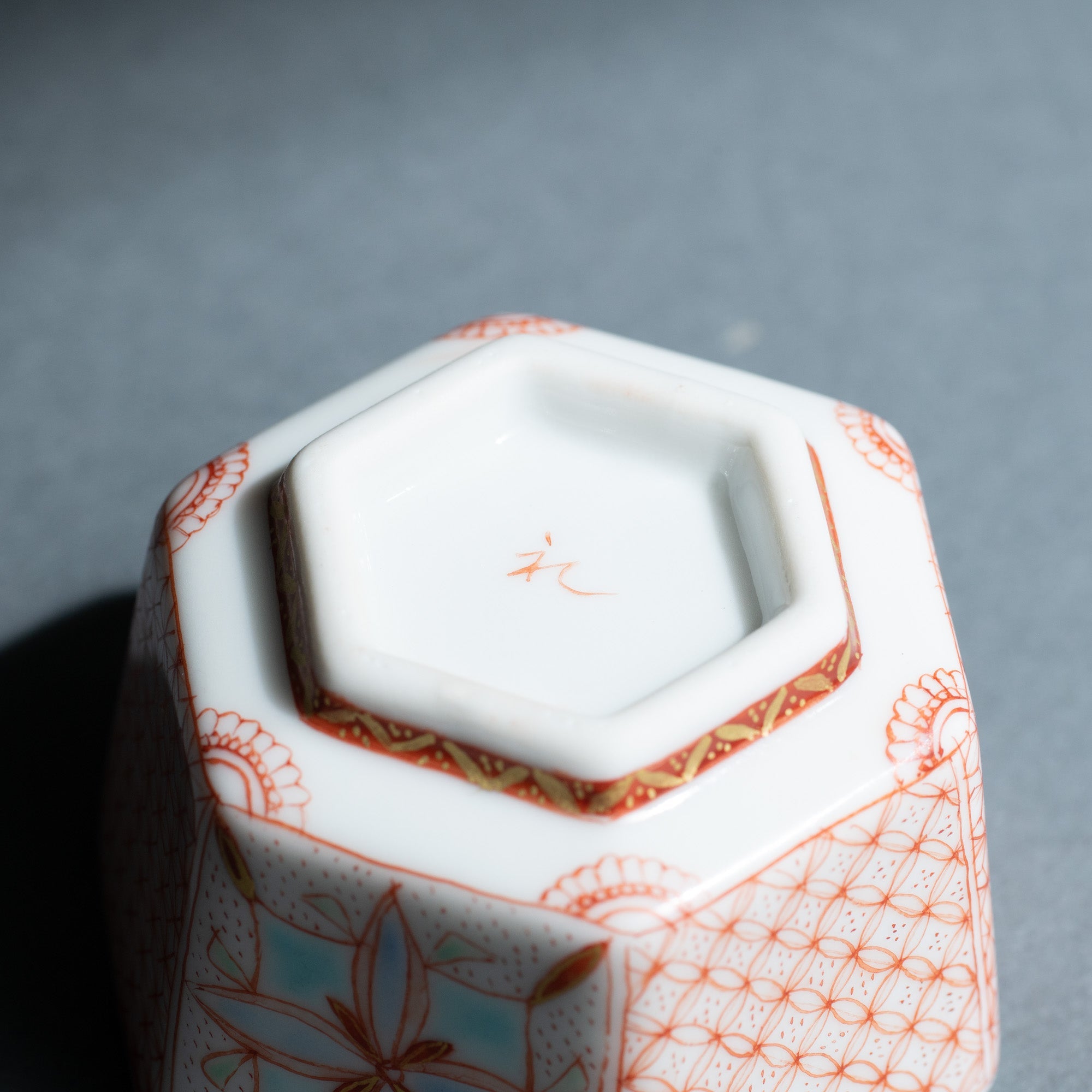
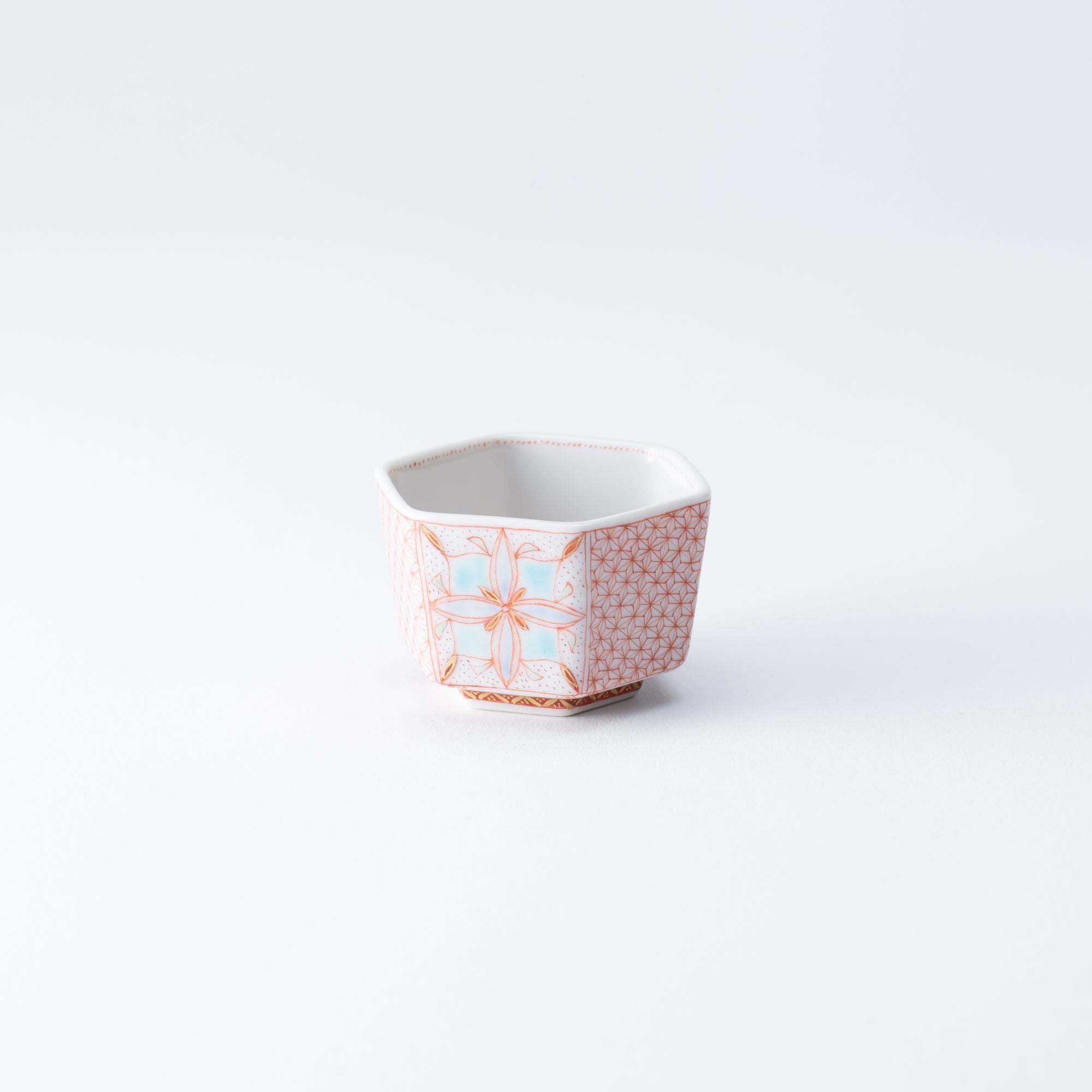
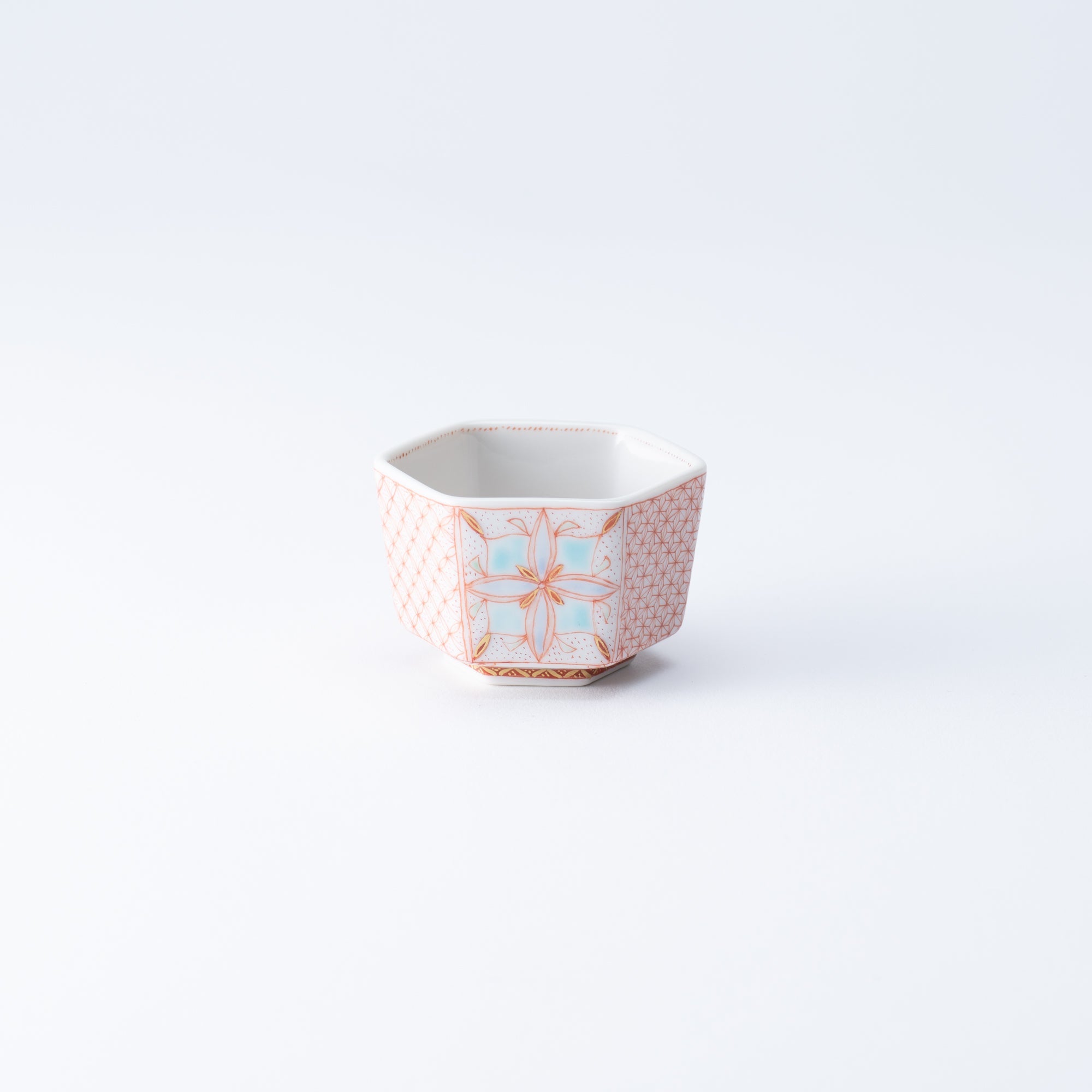
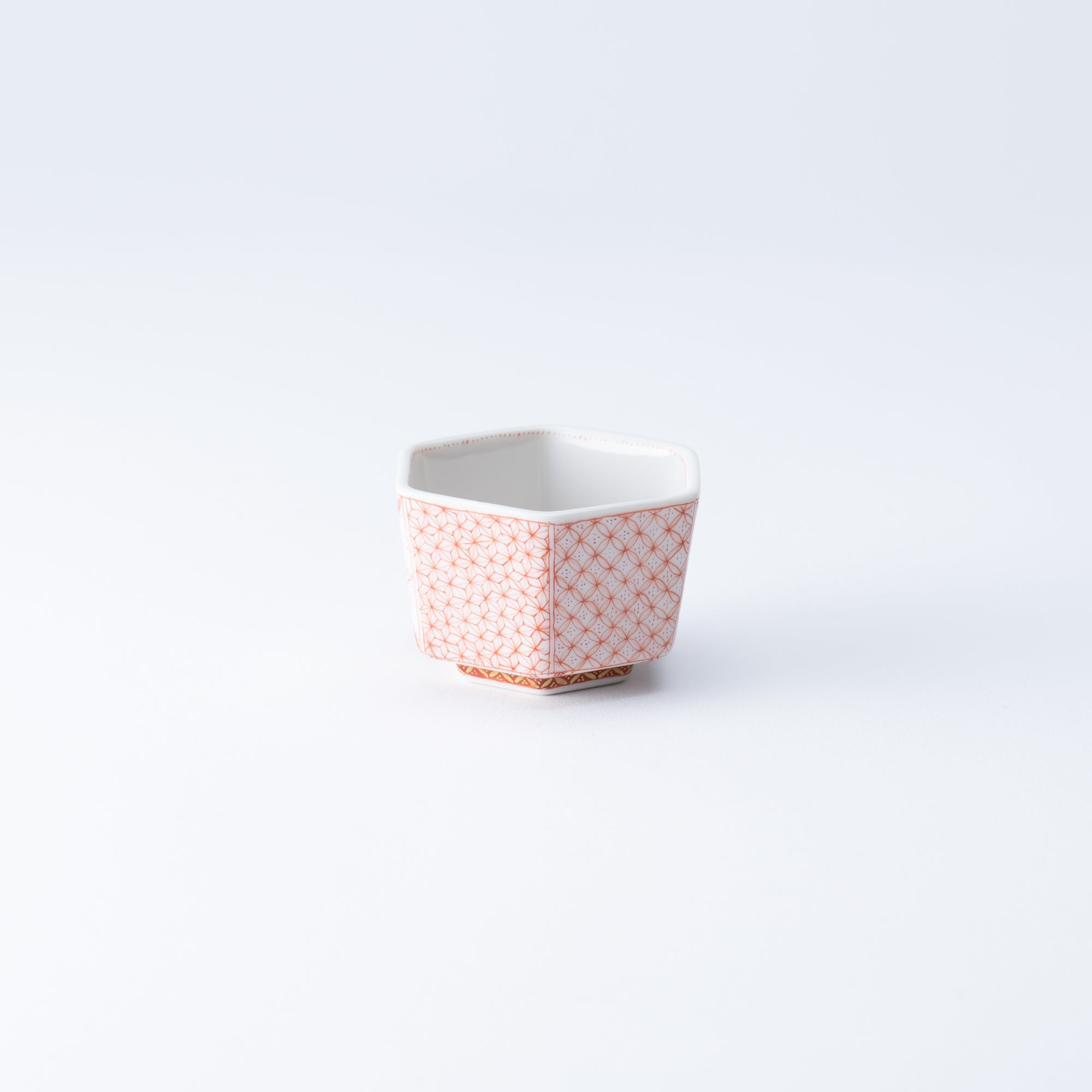
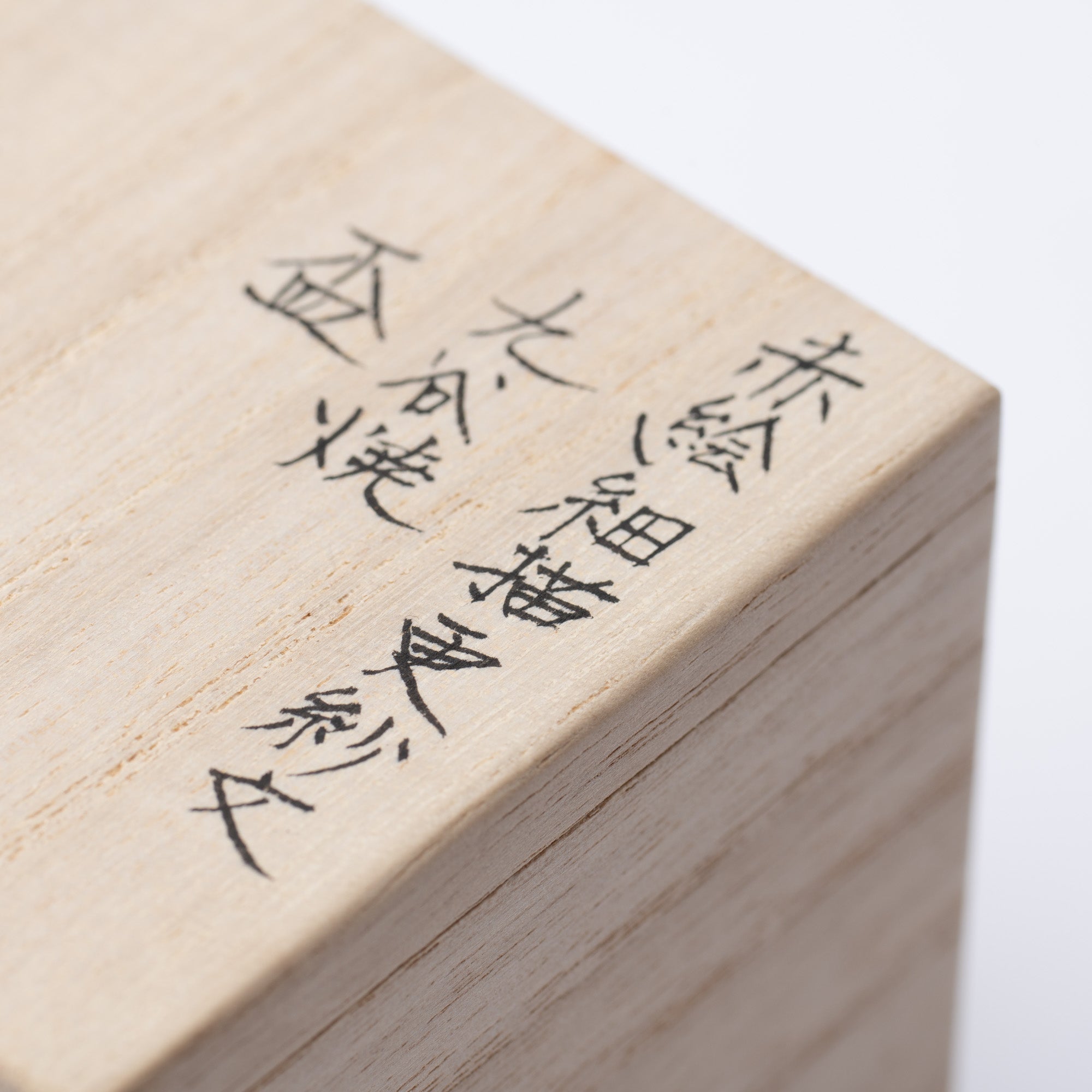
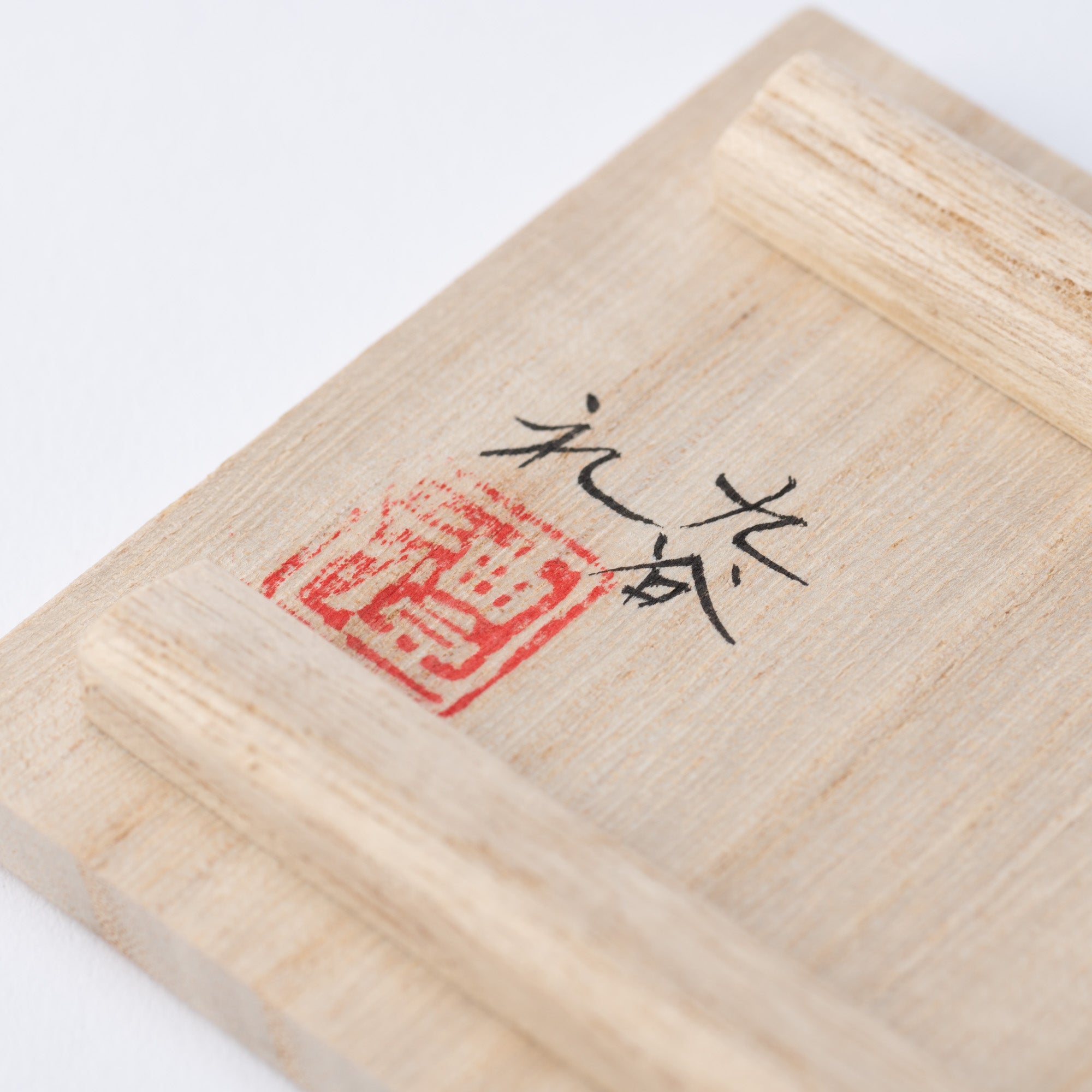
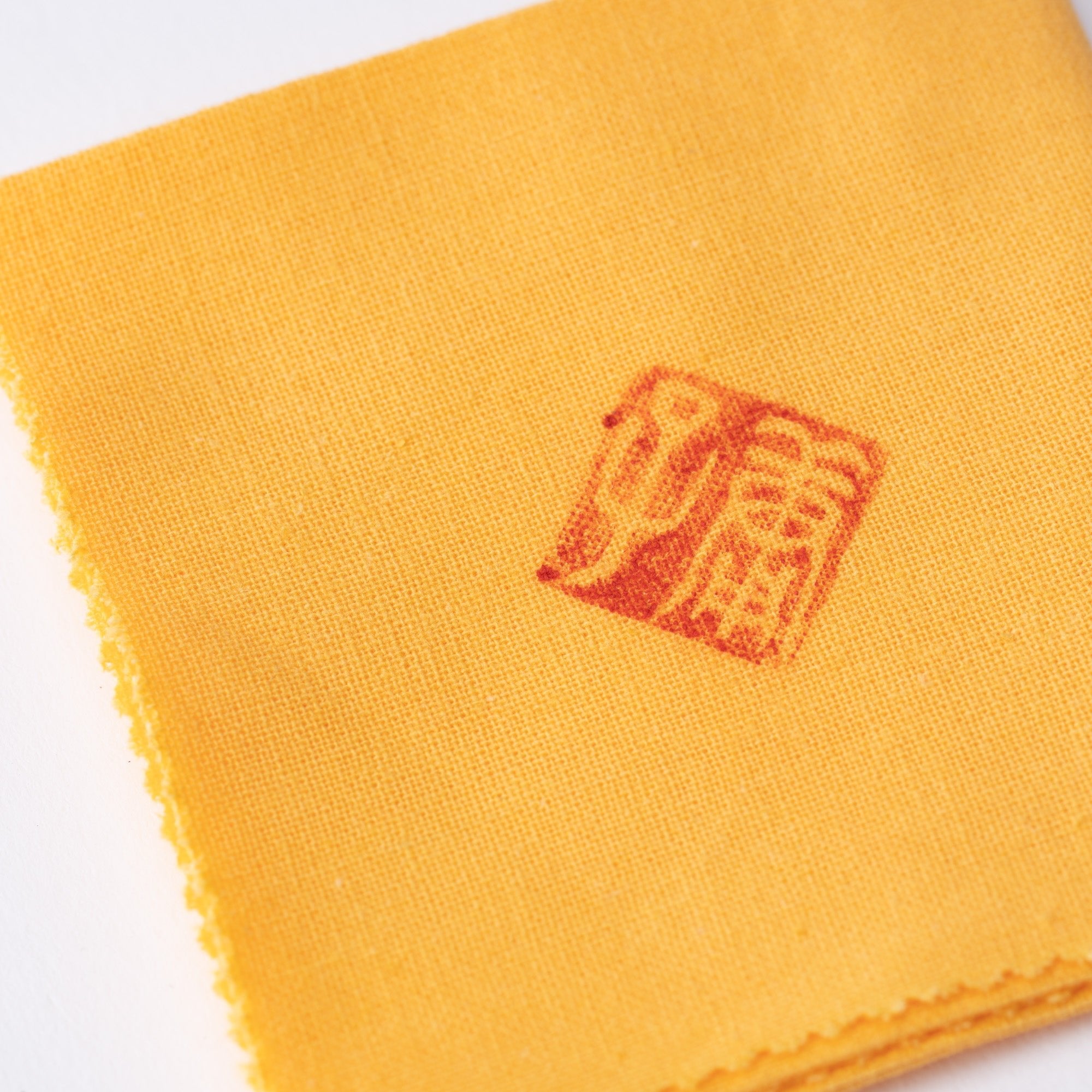
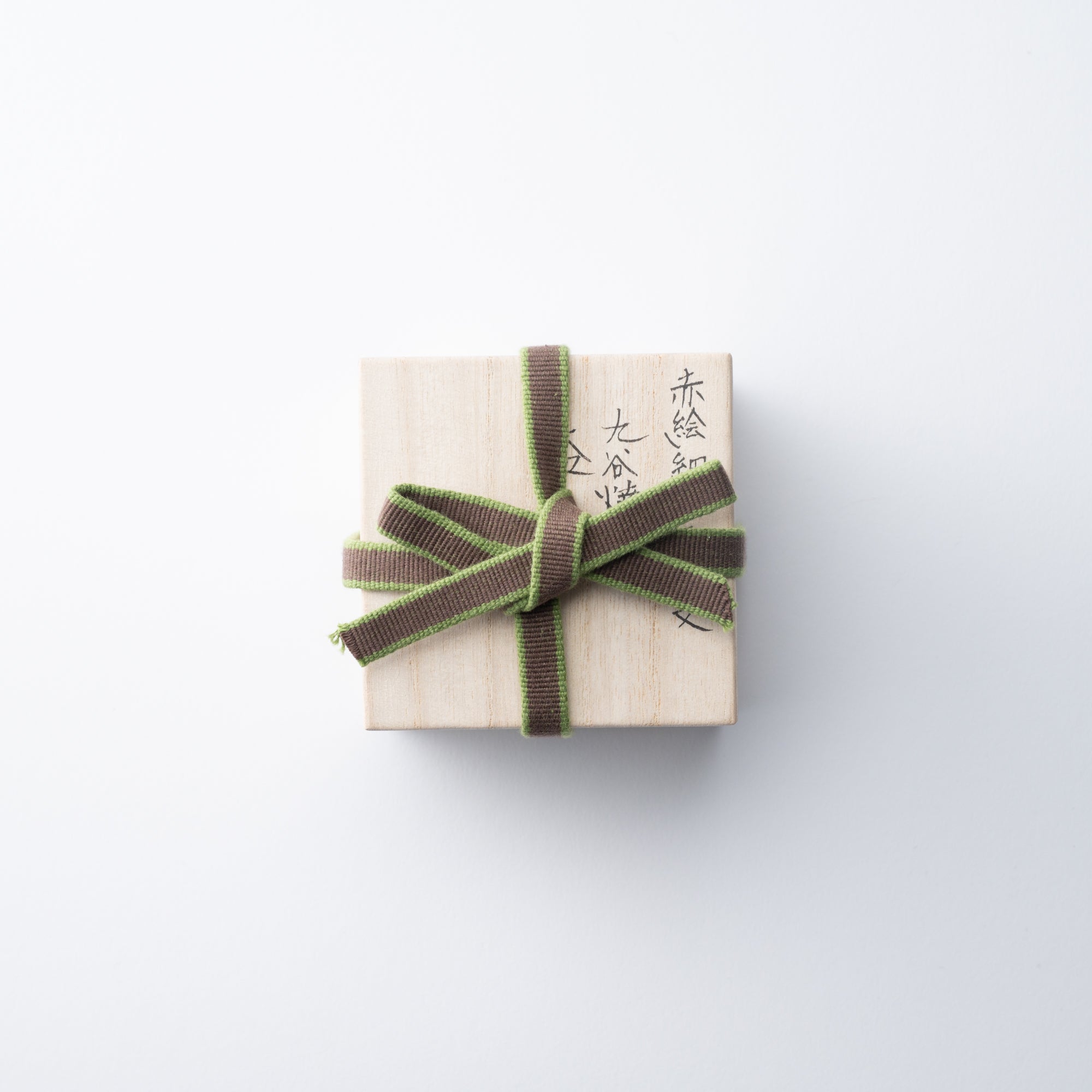

Akae-Saibyo Sarasa Sake Cup
This product is currently available exclusively at Otonami Lounge Tokyo on the 10th floor of Daimaru Tokyo Station.
This sake cup, adorned with intricate red patterns by Fukushima Reiko, showcases her exceptional artistry. While the design initially appears simple, it features a central motif inspired by sarasa pattern, with shippo patterns on the sides and inside. Sarasa traditionally refers to Indian cotton fabric with colorful patterns of people, animals, and plants, similar to chintz or calico. The addition of blue and green hues alongside the red creates a captivating depth and complexity. Randomly placed stippling on the cup's surface enhances its handcrafted warmth and charm.
Akae-saibyo is a refined Kutani ware technique originating in the Edo period (1603 CE–1868 CE). Mastered at the Miyamoto Kiln, this art form employs bengara, a red iron oxide pigment, to meticulously depict birds, flowers, landscapes, and human figures. While some pieces are enhanced with gold accents, the core of akae-saibyo lies in its monochromatic red palette. Renowned for its exceptionally fine lines, often as thin as 0.1 mm (0.004 in), artisans manipulate line density to create subtle variations in red hue, adding depth and richness to their designs.
DETAILS
| Quantity | 1 |
| Size | D 5.5 cm (2.2 in) x H 4 cm (1.6 in) |
| Capacity | 40 ml (1.4 oz) |
| Material | Porcelain |
| Package Type | Wooden box |
| Microwave | No |
| Dishwasher | No |
Maker / Brand
Fukushima Reiko's works utilize the akae-saibyo technique, one of the most notable methods in contemporary Kutani ware. This technique employs hair-thin red lines to create intricate and beautiful patterns on porcelain. Her graceful brush strokes make each line appear to floating above the porcelain, creating a three-dimensional effect reminiscent of dancers moving in and out of shadows and forming a gradient of red shades. Each piece immerses the viewer in the beauty of traditional craftsmanship with refined patterns and designs.

Crafts
Kutani ware is a pottery produced in the Kaga region of Ishikawa Prefecture, with a history spanning over 350 years. It is characterized by the heavy brilliance of the five colors of navy blue, red, purple, green, and yellow that are applied to the bold and daring lines. Its long history has evolved through the tireless efforts and enthusiasm of people who have sought innovation while maintaining tradition.

Choose options
About Artist
Musubi Gallery
Since its inception, MUSUBI KILN has strived to introduce the world to the finest traditional crafts from masters all around Japan.
Here, in the Gallery, we seek to showcase the highest echelon of traditional techniques passed down through generations. You can discover works from masters who have not only perfected those methods, but added their imagination to innovate the craft even further.
Some of these masters have even been named Living National Treasures, a title bestowed upon them by the Japanese government to formally recognize their contribution to crafts and culture — thereby cementing their legacy and making them an important part of art history.
Each piece is meticulously handcrafted over many months to create a timeless treasure that's unlike any other. And when it's in your home, you, too, will become part of that history.
Welcome to the Gallery. Please, peruse at your leisure.


